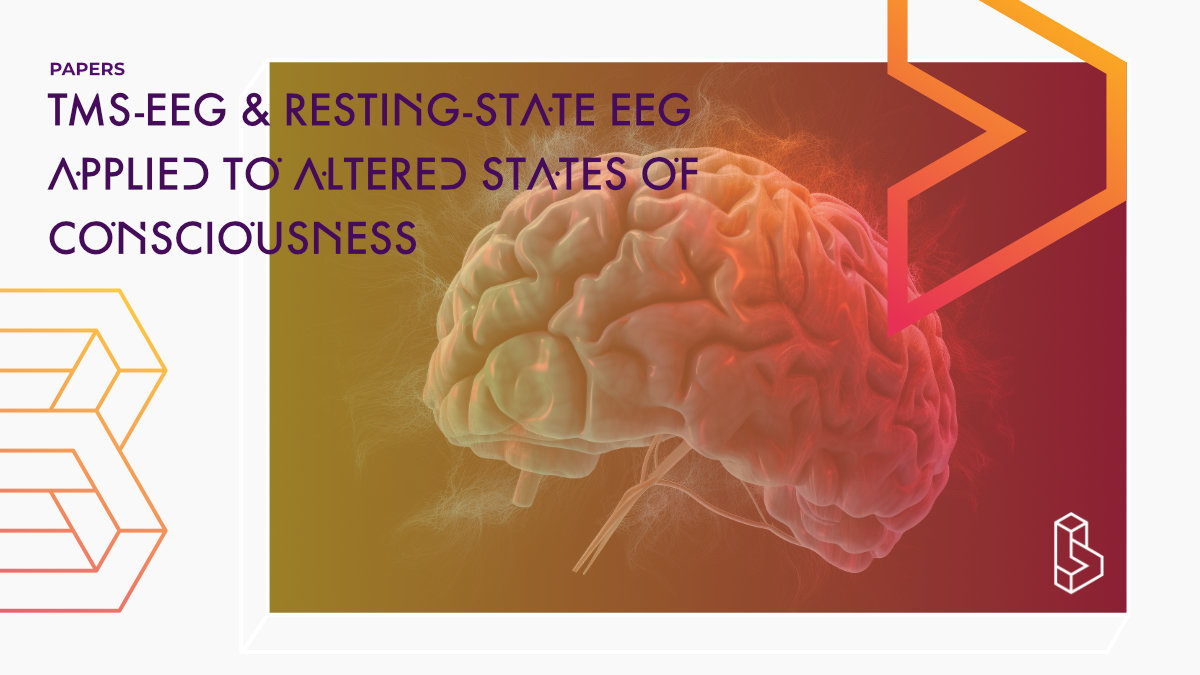This double-blind cross-over brain imaging study (n=22) of psilocybin combined EEG with transcranial magnetic stimulation (TMS) to reveal that psilocybin produces a chaotic pattern of brain activity (versus placebo; LZc complexity under eyes closed). Using TMS, the authors could measure the Perturbational Complexity Index (PCI) due to the stimulation. The difference between psilocybin and placebo on PCI wasn’t significant.
Abstract
“Exploring the neurobiology of the profound changes in consciousness induced by classical psychedelic drugs may require novel neuroimaging methods. Serotonergic psychedelic drugs such as psilocybin produce states of increased sensory-emotional awareness and arousal, accompanied by increased spontaneous electroencephalographic (EEG) signal diversity. By directly stimulating cortical tissue, the altered dynamics and propagation of the evoked EEG activity can reveal drug-induced changes in the overall brain state. We combine Transcranial Magnetic Stimulation (TMS) and EEG to reveal that psilocybin produces a state of increased chaotic brain activity which is not a result of altered complexity in the underlying causal interactions between brain regions. We also map the regional effects of psilocybin on TMS-evoked activity and identify changes in frontal brain structures which may be associated with the phenomenology of psychedelic experiences.“
Authors: Andres Ort, John W. Smallridge, Simone Sarasso, Silvia Casarotto, Robin von Rotz, Andrea Casanova, Erich Seifritz, Katrin H. Preller, Giulio Tononi & Franz X. Vollenweider
Summary of TMS-EEG and resting-state EEG applied to Altered States of Consciousness
Psychedelic drugs such as psilocybin produce states of increased sensory-emotional awareness and arousal, accompanied by increased spontaneous electroencephalographic (EEG) signal diversity. TMS and EEG can reveal changes in the overall brain state.
Psychedelic drugs induce altered states of consciousness (ASCs), which are thought to be mediated by serotonin 2A receptor (5HT-2AR) agonism.
Find this paper
https://doi.org/10.1016/j.isci.2023.106589
Open Access | Google Scholar | Backup | 🕊
Cite this paper (APA)
Ort, A., Smallridge, J. W., Sarasso, S., Casarotto, S., von Rotz, R., Casanova, A., ... & Vollenweider, F. X. (2023). TMS-EEG and resting-state EEG applied to Altered States of Consciousness: Oscillations, Complexity, and Phenomenology. iScience.
Study details
Compounds studied
Psilocybin
Topics studied
Neuroscience
Study characteristics
Placebo-Controlled
Double-Blind
Randomized
Bio/Neuro
Participants
22
Humans
Authors
Authors associated with this publication with profiles on Blossom
Franz VollenweiderFranz X. Vollenweider is one of the pioneering psychedelics researchers, currently at the University of Zurich. He is also the director of the Heffter (sponsored) Research Center Zürich for Consciousness Studies (HRC-ZH).
Katrin Preller
Katrin Preller is one of the upcoming researchers, currently at the University of Zurich and Yale University, and is focused on the neurobiology and pharmacology of psychedelics.

